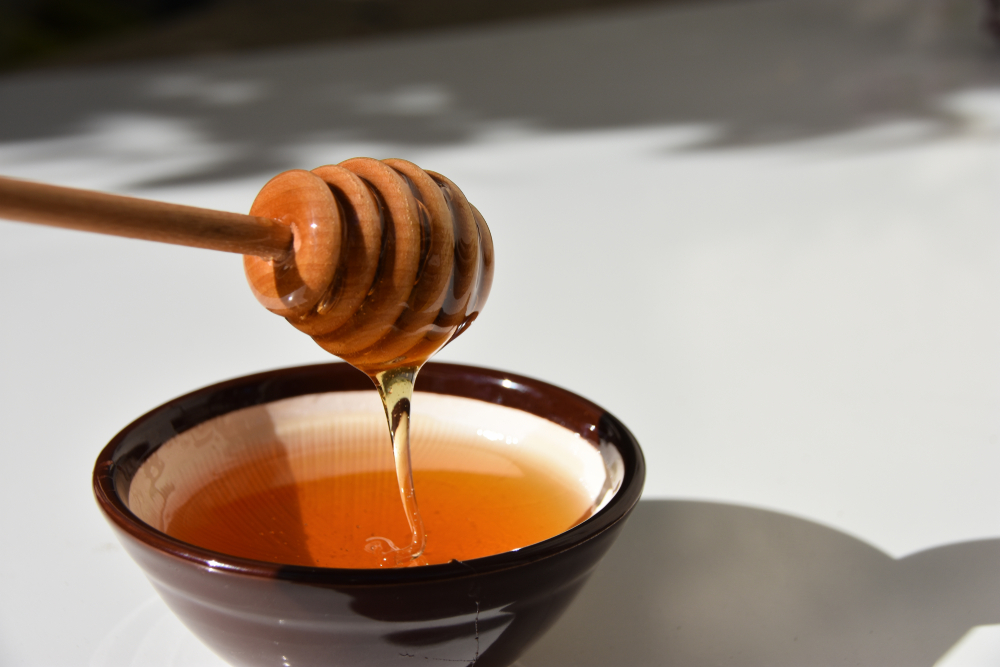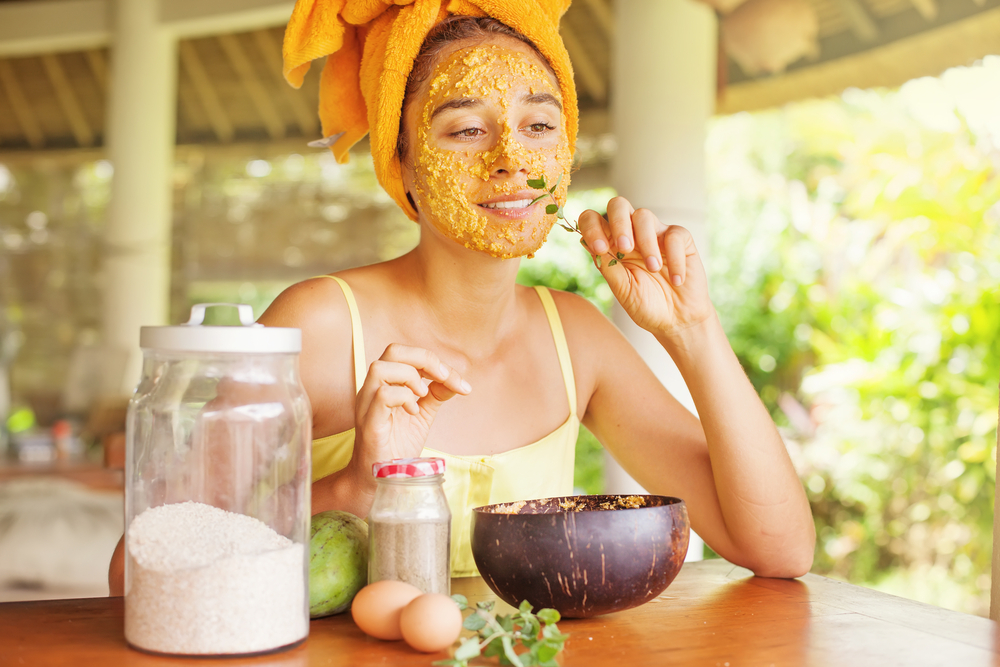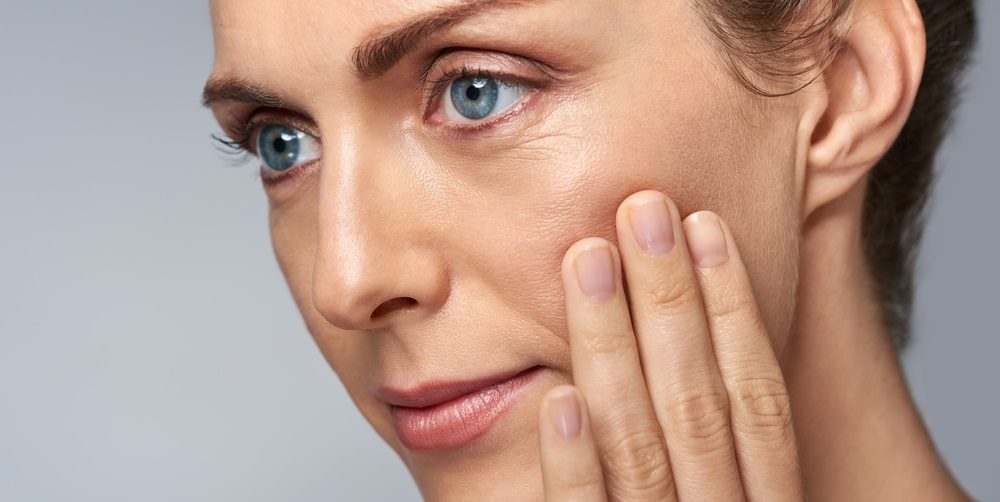- Manuka honey comes from the flowers of the manuka bush indigenous to New Zealand.
- It can be consumed like regular honey, or applied topically to the skin and hair.
- It is used to treat a variety of health conditions, from acne to acid reflux, although studies remain inconclusive.
Manuka honey is lauded for its antimicrobial and health benefits. Touted as a superfood, it features a special complex of active ingredients that set it apart from regular honey and supposedly increase its healing powers.
Proponents claim that manuka honey can do everything from reduce acne to prevent gingivitis and limit acid reflux. How much truth is there to these claims? Here’s what we found out.
What is manuka honey?
According to the Unique Manuka Factor (UMF) Honey Association, “manuka honey comes from the nectar of the flower of the manuka bush (Leptospermum scoparium), which is indigenous to New Zealand. It is the nectar and the bee that give this honey its unique properties.”
The manuka bush can also be found in Australia, though some argue that the only “true” manuka honey comes from its native New Zealand. In fact, the two countries are currently involved in a trademark dispute over the health product.
Where can manuka honey be bought?
Manuka honey has many applications. It can be consumed or used in cooking just like regular honey, or applied to the skin and hair as a face wash, hair mask or spot treatment.
A wide range of products that use the honey as an active ingredient are available, including beauty products and lozenges. While regular grocery stores don’t usually stock manuka honey, you can find it at health or specialty stores, such as Whole Foods, and purchase it from many online outlets as well.
While it’s rare to have an allergic reaction to manuka honey, you should test it first before consuming it or applying it topically. If you’re allergic to bees, approach manuka honey with caution – just as you would any other type of honey.
What sets it apart from regular honey?
Just because a jar bears the label “raw,” “organic,” or “natural” does not make it manuka honey. You have to look for the specific “manuka honey” designation.
It’s only made in New Zealand and Australia, so if the honey was made in another location, it’s not the real deal. And since it has to be exported and due to the stringent quality requirements, manuka honey costs more than regular honey – around $30 a jar.
The antibacterial properties of honey have been known since ancient times and can be attributed to the presence of hydrogen peroxide, which is contained in all honey. This specific benefit has applications in wound care and treating gastrointestinal problems.
According to proponents of this product, however, only manuka honey features a special complex of three ingredients, known as the unique manuka factor (UMF), which gives the honey its superfood health benefits. Those three ingredients are:
- Methylglyoxal (MGO), which fights against several bacteria implicated in infections, such as Proteumirabilis and Enterobacter cloacae.
- Dihydroxyacetone (DHA), which is found in the nectar of the manuka flowers. It’s an omega-3 fatty acid that transforms into MGO during the honey production process.
- Leptosperin, a naturally occurring chemical from the nectar of manuka plants. It‘s stable over time and is an excellent indicator of whether a jar of honey meets manuka’s requirements.
The UMF Association ranks manuka honey on a scale that starts at a 5 and goes up to 26. The higher the rating, the greater the concentration of active ingredients – and the more quickly the honey will take effect.
What are the purported benefits of manuka?
Whether applied topically or consumed orally, manuka honey can allegedly cure all kinds of ills. These claims include but are not limited to:
- Helping with stomach issues, such as small intestinal bacterial overgrowth (SIBO), low stomach acid, acid reflux and ulcers
- Reducing irritable bowel syndrome (IBS) and inflammatory bowel disease (IBD)
- Combating staph infections
- Treating infected and non-infected wounds, burns, surgical incisions, leg ulcers and pressure sores
- Preventing tooth decay and gingivitis
- Easing sore throats and boosting the immune system
- Reducing allergies
- Reducing acne and eczema breakouts
- Enhancing skin tone and texture
- Improving sleep
What does the scientific literature say?
With this long list of benefits, it’s no wonder manuka honey is hailed as a superfood.
Yet despite its popularity and wide range of applications, scientific studies that investigate each specific claim have yet to be performed.
A Cochrane review on honey states that more studies are needed in order to determine if it’s an effective treatment for wound and burn care. The authors note that overall conclusions regarding the effects of honey as a topical treatment for wounds are difficult to draw due to the heterogeneous patient populations studied and the mostly low quality of evidence.
A couple of studies have found that manuka honey may be helpful in treating certain conditions, such as gingivitis, or inhibiting the growth of certain bacteria implicated in wound infection, such as Streptococcus pyogenes. However, replication is needed before these claims can be confirmed.
Evidence for curing other conditions, such as acne and eczema, remains largely anecdotal.
How to take manuka honey
Despite the largely inconclusive evidence of its purported benefits, there’s little harm if you would still like to try this product. It’s safe to consume – unless, of course, you’re allergic to bees or honey.
At room temperature, manuka honey has a thicker texture than other types of honey. Despite its sharper undertones that make it taste less sweet, you can still use it to sweeten your tea, spread it on bread or bake with it. Just be sure not to consume too much as it can raise your blood sugar – just like regular honey would.
Topical uses
Manuka honey can also be incorporated into your beauty routine in a variety of ways.
You can use it as a daily face wash: simply apply a thin coat of the honey to your skin, but be sure to combine it with a little water beforehand as it may be too thick on its own.
The honey can also be employed as an intensive restorative mask for both your face and hair. It can be used to spot treat acne blemishes or eczema patches as well.
In all these cases, you’ll want to let the honey sit for a desired amount of time, and then wipe off the area with a damp cloth or rinse it out thoroughly if you apply it to your hair.
The last word on manuka
Honey’s antibacterial properties have been known for thousands of years, and manuka honey takes things to the next level with its unique manuka factor.
Manuka honey has a wide variety of applications, and while the evidence is largely anecdotal at this point, is has no known side effects — it short, you have nothing to lose by trying it.
» To find out more about manuka honey and other natural skin care products, use Zwivel’s free online consultation tool to contact a cosmetic doctor in your area.









